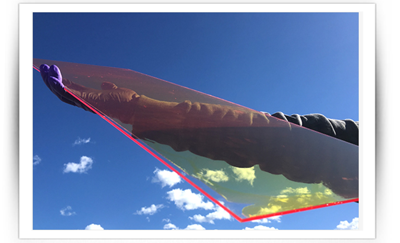| Researchers from Los Alamos National Laboratory and the University of Milano-Bicocca has designed and synthesized a new generation of quantum dots for use in solar energy system that overcomes previous inefficiencies in harvesting sunlight.
Quantum dots which are nano crystals of semi conducting materials, appeal to scientists for use in solar photovoltaics (solar panel system) because they are very versatile and are not very costly. In particular they are desirable for use in luminescent solar concentrators (LSC's), which are photon management devices that serve as alternatives to optics based solar concentration system.
LSCs are constructed from transparent .
LSCs are constructed from transparent materials containing emitters such as Quantum dots. They concentrate solar radiation absorbed from a large area onto a significantly smaller solar cell. LSCs have the potential to develop photovoltaic windows, which could turn buildings into energy producing factories. Although quantum dots are highly efficient emitters, their small Stokes shift (the presence of an overlap between emission and absorption) means that some of the light produced is re-absorbed by the dots, resulting in losses of emission and therefore overall efficiency problems.
To resolve this issue, the team generated “Stokes-shift-engineered” giant quantum dots composed of a cadmium selenide (CdSe) shell which absorbs light, and a cadmium
sulfide (CdS) core which is responsible for light emission. This separation of absorption and emission caused a significant reduction in re-absorption losses which previously caused inefficiencies. The dots were then incorporated into a high-quality polymethylmethacrylate (PMMA) matrix, and spectroscopic analysis revealed that re-absorption losses were minimal across distances of tens of centimeters.
|
*Image source: http://www.iflscience.com/technology/quantum-dot-technology-could-lead-solar-panel-windows/

*source:https://spectrum.ieee.org/energywise/energy/renewables/quantum-dot-coating-could-pull-solar-energy-from-your-windows |